Red Meat (Beef) TIMPs
Introduction
There is an increasing demand for red meat (Beef) in Kenya which calls for high growth rates, quality and maturity weight. In addition, the changing consumption habits for the increasing affluent Kenyan population is increasing the demand for high quality beef. Effect of climate change necessitates that breeds kept in the ASAL be both heat and disease tolerant. Slow growth rates, low maturity weights and generally low productivity from indigenous breeds. There is need for a dual-purpose (meat and milk) cattle breed.
1. Improved Boran
- A beef breed that has high growth rates, is resistant to diseases and parasites, tolerant to high temperature and has high (400 kg) maturity weight at 30-36 months
- Improved Boran produces quality beef in the ASALs at relatively low cost as it can be finished on grass only.
- It utilizes low digestible forage and has high feed conversion efficiency
- It has high (60%) carcass dressed weight
- Acceptable breed colour (brown; fawn, grey and bristle) by Boran Breeders Association
- Has very good meat quality

Improved Boran Bull
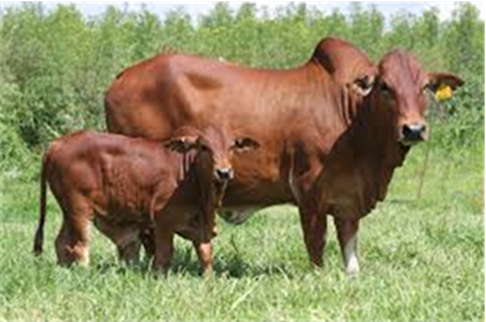
Improved red Boran cow with calf
2. Improved Boran/Red Poll Terminal Crosses In-Calf Heifers
- Dual-purpose cattle breed that provides both meat and milk.
- It produces up-to 20 litres of milk daily.
- The breed is tolerant to both diseases, parasites and high temperatures as well as utilizes poor quality feed.
- It has high (250-350 kg) maturity weight at 30-36 months and carcass dressed weight of 60% for steers
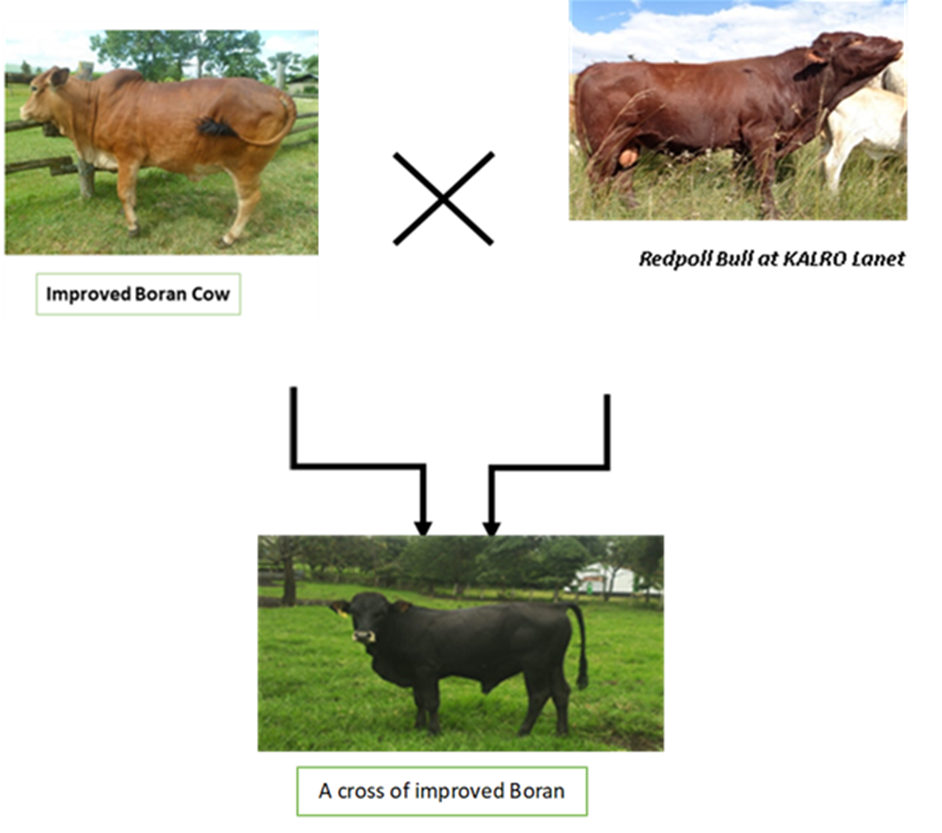
3. Improved Boran/Sahiwal cross
- Dual-purpose cattle breed for both meat and milk with improved udder setting and suspension.
- It is tolerant to diseases and high temperatures and utilizes poor quality forage.
- Steers have high (420 kg) maturity weight at 30-36 months with high (60%) dressed carcass weight and quality
- Improved Boran x Sahiwal cross produce both milk and quality beef in the ASALs at relatively low cost.
- Rapid growth rate (700g/day) fed on natural grass
- Good body conformation
- Slaughter weights (450-600 kgs)
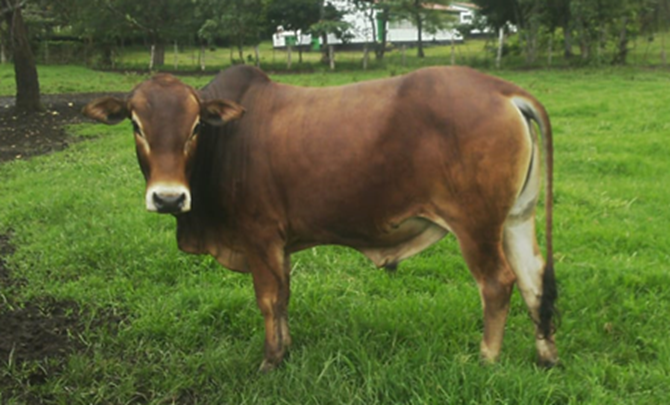
A cross of improved Boran and Sahiwal at KALRO Lanet
4. Sahiwal
- A dual-purpose (meat and milk) cattle breed.
- The breed is relatively tolerant to diseases, parasites, and high temperatures and utilizes poor quality feed.
- It has high maturity weight with males weighing 300 kg at 24 months and females 270 kg in 27 months and produces high-quality beef.
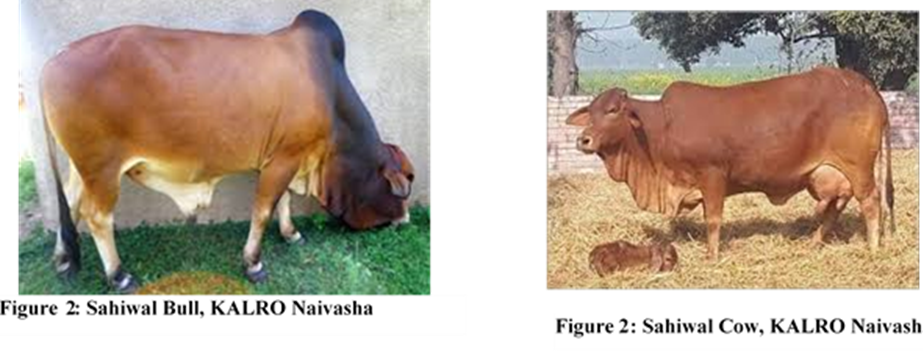
5. Orma Boran
- An indigenous/traditional dual-purpose breed (for meat and milk) that is fast growing (400 g/day) and has been found to be tolerant to trypanosomiasis.
- Age at first calving (36-52 months) at 225-355 kg body live weight
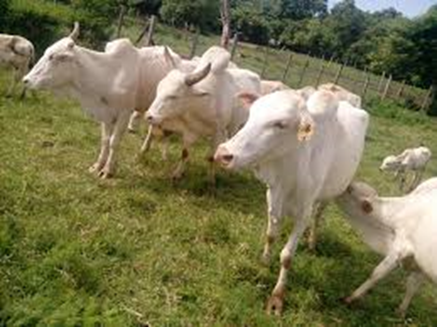

Orma Boran - Kalro Lanet Orma herders watering the cattles
6. The Small East African Zebu(SEAZ)
- Dual-purpose indigenous/traditional breed which though small in body size
- Hardy, disease and pest tolerant.
- Climate smart animal, that its productivity could be improved with modern genetics.
Forage Sorghum (E6518)
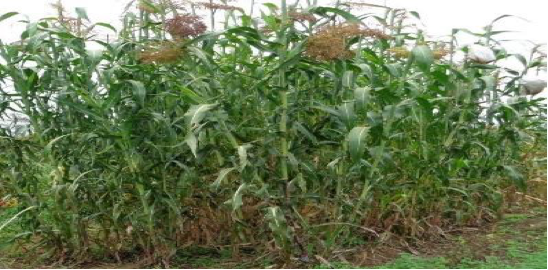
Forage Sorghum E6518
- It is a white mid rib (WBR) open pollinated sorghum variety (OPV) that is high yielding and highly digestible.
Dual purpose sorghums (Ikinyaruka; E1291, BJ28, BM30, Lanet1)
- Open pollinated varieties (OPV) that are dual purpose that gives high grain yield and high forage dry matter in the dry highlands as well as in the coastal Lowland zone.
- The sorghums are highly digestible and hence low emission of GHG
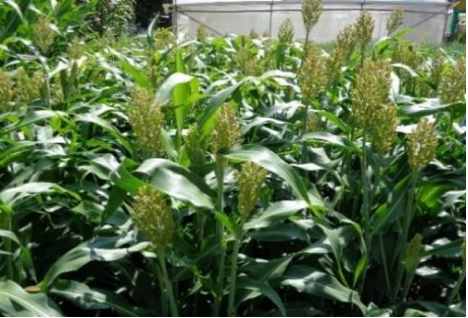
Dual purpose sorghum - Ikinyaruka variety
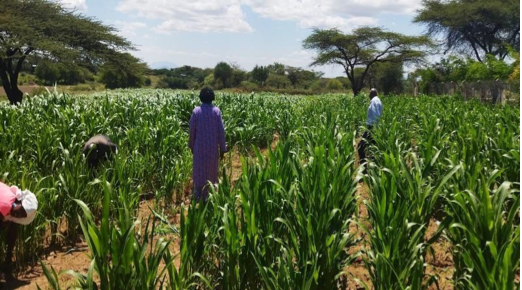
Dual purpose sorghum E1291in Isiolo County
- Both drought tolerant and climate smart
- Shortage strategy during dry spell.
- High grain (5-6 t/ha) yield and high (14-18 t/ha) forage dry matter.
- Cold dry highlands, at an altitude of 1500–2000 meters and with 650 mm annual.
Chloris Gayana var X-tozi and Lanet
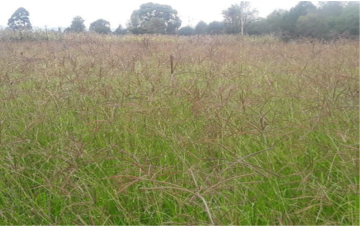
Rhodes-Chloris Gayana in farm filed
- Lanet Rhodes is a perennial stoloniferous grass adapted to dry highlands and semi-arid areas.
- High yielding and drought tolerant
- X-tozi is a leafy perennial and grows to a height of between 30 150cm.
- It is adapted to the semi-arid areas and coastal lowlands.
- It is high yielding (833 bales/ha)
Lanet Brachiaria Varieties (B. brizatha var. Busia; B. brizatha Var. Bungoma ; B. brizatha var. Lanet)
- High yielding (up-to 30 ton/ha), disease and drought tolerant and produce viable seeds for propagation.
- They have high (12%) crude protein levels.
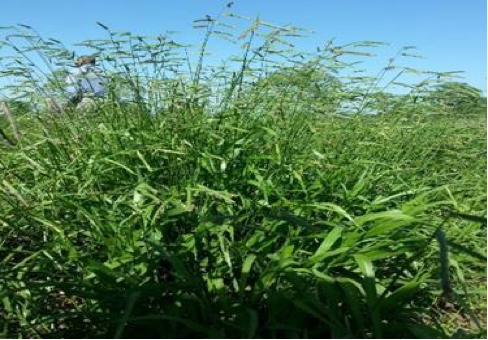
Brachiaria variety B. brizatha var. Busia
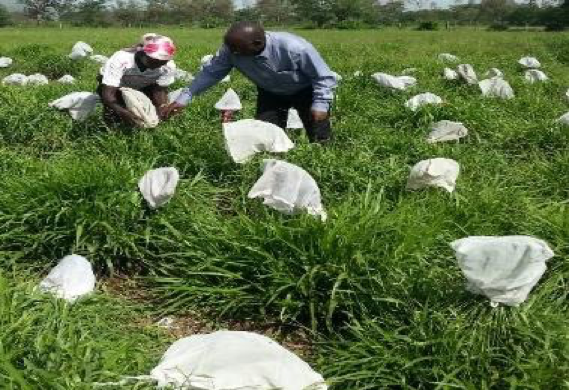
Bagging of brachiaria to harvest seeds
Brachiaria Mutant Variety
- High yielding (up-to 30 ton/ha), disease and drought tolerant and produce viable seeds for propagation.
- It has(12%) crude protein content.
Clitoria (Clitoria ternatea)

Clitoria (Clitoria ternatea)
- A perennial herbaceous forage legume with high protein content.
Tree Lucerne
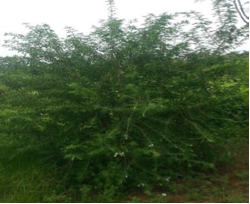
Tree Lucern
- Evergreen perennial legume shrub rich in crude protein (18-25%).
- It grows in warm attitudes and cold highlands (1500 – 2500 masl with 600 – 1600 mm annual rainfall.
Brachiaria spp and Dolichos (Dolichos lablab) and Desmodium feed blocks feed blocks
- Comprises of compressed dried Brachiaria grass and Dolichos (Lablab) or Desmodium stabilized block that is nutritious and easy to transport from feed surplus regions to feed deficit areas with ease.
Sweet Potato (Wagaborige)
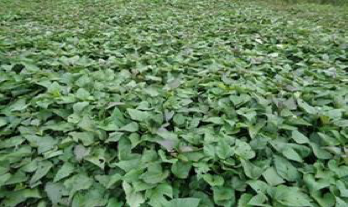
Sweet Potato (Wagaborige)
- A sweet potato variety that is high yielding (tuber - 7t/ha and forage - 24 t/ha) with high (16.5%) protein rich forage.
Vaccines
1.East Coast Fever (ECF) Vaccine
- Confers life-long protection against ECF
- •Used in combination with 30% oxytetracycline antibiotic to prevent parasites from causing clinical disease.
- •Administered by trained personnel
- •Animals immunized with this vaccine require minimal tick control.
2.Sub-unit Contagious Bovine Pleuro-pneumonia (CBPP) vaccine
- Can be kept at room temperature for 14 days.
- When injected in the animal offers sufficient protection from CBPP.
3. Contagious Bovine Pleuropneumonia DIVA Vaccine
- disease that lowers beef production in Kenya.
- Has important consequences on international trade
- As such detection of the disease in an area attracts trade barriers and restrictions.
Use of heart girth band to estimate Boran liveweight
Estimation of the body live weight of Boran using the Bos Taurus weigh-band
Calf Management
How to feed the calf?
- Feed colostrum from its mother for at least the first 3 days of life to boost its immunity and hence the chances of survival.
- Colostrum is the first milk from the mother. Its rich in protein and boosts immunity to diseases.
- Leave the calves with their mothers to suckle until weaning which is done at seven months.
- Bucket feeding is recommended when the calf is not able to suckle or in case where the calf is orphan.
Calf Feeding Schedule
|
Weeks |
Body weight |
Litres per day |
|
1 |
27kg |
0.54 |
|
2-3 |
30kg |
0.6 |
|
4-6 |
32 |
0.64 |
|
7-10 |
33.5 |
0.67 |
|
11-14 |
35 |
0.7 |
|
15-16 |
36 |
0.72 |
|
17-20 |
37 |
0.74 |
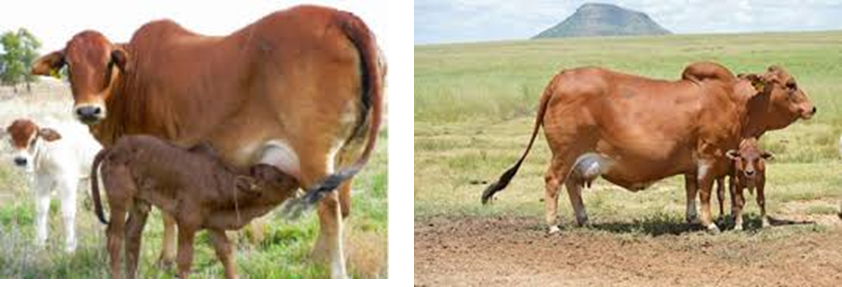
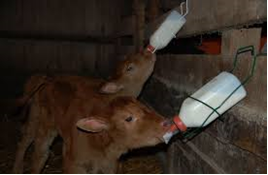
Figure 1: Orphan Calf Bottle
How to identify the calf?
- Identified with an ear tag or tattoo.
- Records should be kept to identify the birth date and at least the sire and dam of each calf
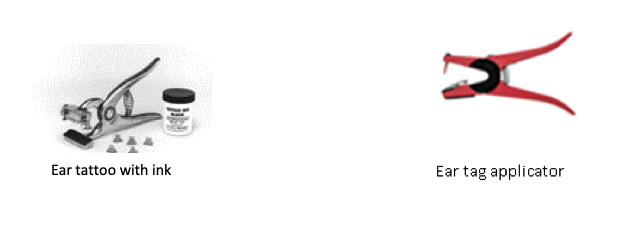
What is dehorning/ disbudding?
• Dehorning involves cutting over grown horns.
• Disbudding is the process of removing horn buds in calves using hot disbudding irons.
• This is done to at 3 weeks to 1 month of age.
What is dehorning/ disbudding?
- Dehorning involves cutting over grown horns.
- Disbudding is the process of removing horn buds in calves using hot disbudding irons.
- This is done to at 3 weeks to 1 month of age.
Why dehorn/disbud?
- For easy handling
- To prevent injuring animal handlers and other animals
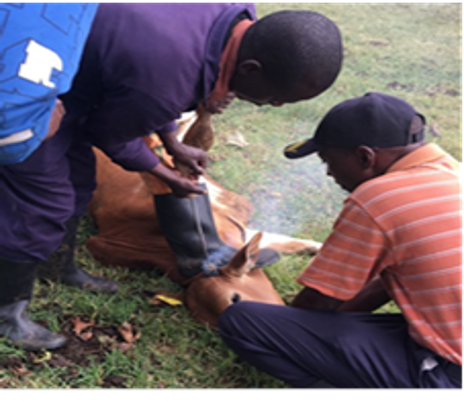
Disbudding at Kalro-Lanet
Weaner and Steer Management
What is weaning?
- Weaning is the permanent separation of a calf from its mother.
- Calves are weaned when they are 7-8 months of age.
- Weigh the weaner at the beginning and at the end of weaning.
- Weaning weight for boran calves ranges between 160-180 kgs.
- Put permanent identification by branding using hot branding iron.
- Separate female weaners from male weaners and release them to their respective herds.
- Male weaners that meet the selection criteria are retained as breeding bulls while others are castrated for slaughter.
Feeding of weaners
- Weaner cattle have high requirements for both protein and energy to grow.
- Feed calf pellet at the rate of 1-2kg per day
- After weaning diets should aim to provide rations containing 11.5MJ of metabolisable energy (ME) and a minimum of 15% crude protein.
- Graze the weaners on high quality pastures
- A diet of this quality will enable the weaners to gain weight faster.
Weaner Husbandry Practices
Castration
What is castration?
- This is the removal/inactivation of testes in males at weaning so that the animal doesn’t breed.
- This is normally carried out at 7 months of age.
- Castrated males become steers
Heifer management
- Good heifer management achieves early puberty, high rate of conception
- Management of breeding females begins at weaning
- Boran heifers attain the age of 18 – 24 months depending on body condition score with average weight of 250-285 kgs.
Feeding of heifers
Why feed?
This is important for the following reasons;
- Enables the heifers to reach the desired critical mating weight (CMW)
- Enables heifers to be in body condition score 3 or better at calving
- Enables heifers maintain adequate body condition and growth during their first lactation.
- Weaner nutrition is critical as poor growth in this period can increase weight at puberty, thus reducing early lifetime fertility.
- Feed heifers well above maintenance diets so the skeleton keeps growing.
- Allow heifers are to graze on high quality pastures and supplemented with minerals stock lick twice a month to correct any mineral deficiencies in the soil.
- Ensure that adequate clean water is available all the time.
- In case of paddocking, a minimum of 2 secure paddocks are required
- At 18 months these should be transferred to the larger paddock.
Health management for heifers
Routine disease control measures should be considered. This includes;
- Deworming after every three months to control internal parasites
- Dipping on weekly basis for tick control
- Disease management- vaccination of notifiable diseases and prompt treatment of sick ones.
- Use vaccinated bulls to control fibrosis.
- It is suggested that producers take advice from their cattle health service provider when considering whether vaccinations should be used prior to mating
Selection and culling
Why select and cull?
- The type of heifer selected will determine the type of cow comprising the breeding herd.
- Selection and culling should be based on heifers own performance, the performance of her parents and her conformation.
- At 2 years of age selected heifers are transferred to a mature breeder paddock
Cow Management
Why feed the cow?
- It is important for maintenance of adequate body condition.
- Cows must have access to adequate pasture, water and supplementation to keep them in the best possible condition.
- Both pasture quantity and quality is important because they affect consumption of pasture (intake) and hence the nutritional status of the cow.
Routine disease control measures should be undertaken.
- This includes vaccination of notifiable diseases and prompt treatment of sick ones
- Deworming after every three months to control internal parasites.
- Dipping on weekly basis for tick control.
- Where possible use vaccinated bulls to control vibriosis.
- It is suggested that producers take advice from their cattle health service provider when considering whether vaccinations should be used prior to mating.
Vaccination
What is vaccination?
- Vaccination is a procedure that improves an animal’s immunity to disease.
- For beef cattle, a wide range of effective vaccines are available for many common diseases.
- Vaccination should be done before seasonal occurrence of the disease and in the face of disease outbreak.
- It is done against notifiable diseases such as foot and mouth disease, lumpy skin disease, black quarter/anthrax, rift valley fever and east coast fever
Vaccination schedule for beef cattle for Nakuru County
|
Vaccine |
Months |
|
Foot and mouth |
January, May and September |
|
East coast fever |
February |
|
Black quarter |
April (before onset of long rain |
|
Anthrax |
April before onset of long rain |
|
Lumpy skin disease |
March |
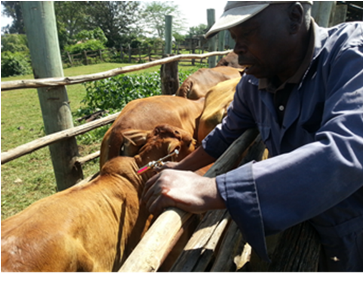
Administering Foot and Mouth vaccine at KALRO Lanet
Dipping
Why dipping?
- Dip contains acaricides/Chemical that Kill Ticks and other external parasites.
- Ticks cause tick borne Diseases hence increase cost of treatment.
- Dipping is done weekly for all cattle to reduce ticks using a plunge dip.
- Dip samples are assessed monthly to determine dip strength.
- It is done on a weekly basis but during peak of rainy seasons tick load is usually
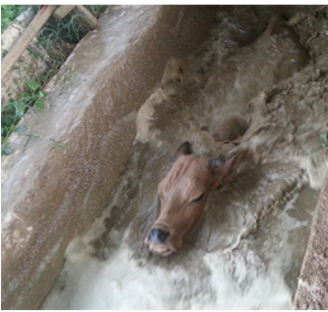
Cattle dipping at KARLO-Lanet
Weighing
Why weigh?
- To monitor the growth of the animal
- For feeding purposes
- For sale purposes
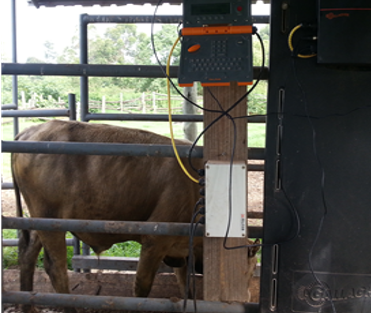
Calve weighing at KALRO Lanet
Deworming
Importance of deworming
- Deworming is important in reducing internal parasites such as lungworms, gastrointestinal round worms.
- A broad spectrum anthelmintic (dewormers) is advisable to be used.
- Deworming should be done thrice a year.
- For instance, in BRI Lanet, deworming is carried out on all animals in March, July and November

Deworming of Improved Boran weaners
Source: BRI Lanet
Hoof Trimming
What is Hoof trimming?
- Hoof trimming is the cutting of overgrown hooves to prevent lameness in Beef cattle.
The importance of preventing lameness and for the good welfare of the cattle.

Hoof trimming by An animal Health officer
Selection of Breeding Heifers and Bulls
Selection of Breeding Heifers
What to consider when selecting heifer:
- Weight
- Body condition score
- Body conformation
- Health.
Selection of Breeding Bulls
- The role of bulls in a herd is to produce calves - as many as possible for as long as possible.
- A sound bull is capable of siring about 40 calves per year, for about 4 to 6 years - a potential of over 200 calves in his lifetime.
- Body condition of bulls is a critical issue.
- Bulls with a larger scrotal circumference are preferred.
- Ability and desire to mate.
- Bulls should have strong legs, feet, joints and all components of the reproductive tract.
Records Keeping, Importance and Management
Why keep records?
- Records are simply collect for information that can help one to make good decisions and to keep track of activities, production and important events on a farm.
- It is important to keep record in simple and systematic manner.
- If records should be of use for the farmer, they must be complete (none missing) and true (collected carefully).
Types of Records
Birth Notification register
- Maintains the records of calf at the farm, calf number, sex of the calf, sire number, dam number, birth weight etc.
- Each animal should be given a number or name so that they are easily identifiable.
- A calf should be tagged for identification and birth weight taken within the first 24 hours of birth.
Birth notification record sheet
|
Date of birth |
Identification no |
Sex |
Birth weight |
Dam |
Sire |
breed |
Treatment record sheet format
|
Animal No |
Age |
sex |
Clinical signs |
Diagnosis |
Treatment (drug used and dosage) |
Withdrawal Length |
Withdrawal date |
Name of service provider |
sign |
remarks |
Vaccination/Deworming record sheet format for planned disease control
|
Vaccination date |
Vaccination done |
Type of vaccine and dosage |
Batch No |
Withdrawal date |
Next vaccination |
Name of service provider |
Sign |
remarks |
Production (performance) Records
- These records are useful in measuring the performance of the animal and the herd.
- For beef cattle, weight records are used to measure growth performance of the animals.
- Monthly weighing – helps in determining the Average daily gain per herd/ individual hence tell the growth rate
Sample of weight record from birth to one year
|
ID |
BREED |
SEX |
BRTH-WT |
WT1 |
WT2 |
WT3 |
WT4 |
WT5 |
WT6 |
WT7 |
WT8 |
For dual purpose animals, milk records are kept with the following parameters; -
- Daily milk yield
- Milk content (Butter fat content, protein, Solid Non Fat)
- Lactation length
- Milk fed to calves
- Milk consumed at home
- Milk sold
- Milk spoilt
Milk record sheet format
|
Date |
Daily milk yield produced |
Milk fed to calves |
Milk consumed at home |
Milk sold |
Milk spoilt |
remarks |
|
|
|
|
|
|
|
|
|
|
|
|
|
|
|
|
Feeding Records
These should indicate the amount of feeding given as well as the type of feed. Thus the important records are:
- Available fodder on farm
- Quantity fed
- Concentrate supplemented
- Minerals
- Left-over ( per head and per feed, if possible)
- Spoilage (per batch)
Sales records
- Records of all animals sold each month and year should be maintained.
- They are a good indication of the economic viability of the enterprise.
- This should contain, animal identification number, sex, breed, live weight and selling price.
Sales record Sheet format
|
Animal No |
sex |
Breed |
Live weight |
Price(amount Kshs) |
Reason for sale |
Deaths records
- These records help in determining mortality rates in the farm and also identifying the most dominant killing disease.
Deaths record Sheet format
|
Animal No |
Date of death |
sex |
Breed |
Age |
Cause of death |
Registering Bull and Heifers
- Registration of the beef cattle is done to ascertain their ancestry and production traits.
- It is done by the Kenya Livestock Breeders Organization (KLBO) through the Kenya Stud Book.
What are the benefits of registration with the Kenya Stud Book?
- Simplifies selection of breeding herd. This is instrumental in avoiding inbreeding.
- Registered animals are sold at a higher price than their unregistered counterparts.
- The farmer can be contracted with breeding centers that supply sexed semen.
- The farmer keeps the heifers.
- The farmer can export their heifers and other beef products easily.
- Opportunity to sell heifers at various breeders shows.
Kenya Stud Book registration process
- Clearly mark/tag your animals (use notches, tags, chips or skin branding) for easy identification. A KLBO agent can help.
- Fill in the Kenya Stud Book application form for an official name for the herd. You’ll find all the needed details in the form.
- After the approval of the application, a registration forms for individual cattle will be provided. A KLBO agent will be sent to the farm to verify the information and classify the animals.
- Available classes include Foundation, Intermediate, Appendix or Pedigree class. An animal’s class is determined by its individual characteristics and the class of its parents. Foundation is the lowest class while pedigree is the highest.
- Once the registration forms are duly filled, return them to the KLBO office for issuance of animal registration certificates.
- The registration fee per animal will depend on its class, breed and sex.
- Half of the udder of a lactating cow is milked while the other half is suckled by the calf for increased calf survival.
- Calves raised using this regime have low weaning weights but are finished at the same age as those raised on 100% suckling of the dam
- Pastoralists set a part of their grazing land for wildlife conservation.
- The land is zoned into core conservation and buffer areas.
- Livestock are not allowed in the core conservation area but are grazed in the buffer area during the dry season
- The core conservation areas is used for tourism and ecotourism as a form of wildlife utilization to generate income for the community
- Appropriate range management practices that include reseeding, bush management and optimal stocking rates are implemented Beef finishing and organized marketing for the beef is done.
- The National market for livestock demands a well finished beef after 2½ years and weighing more than 350 kg.
- All animals should be free from notifiable diseases, no bruises and blemishes and not fed with growth hormones or animal
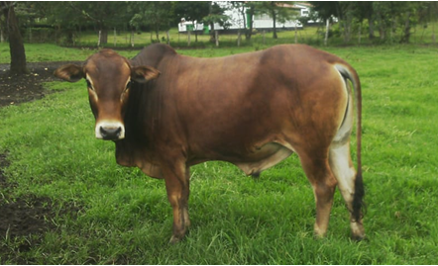
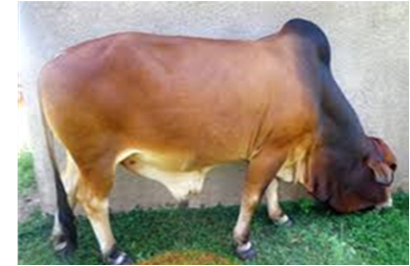
Basic costs
- Cost of Unregistered Bull Ksh 100,000 -130,000
- Registered Bull sold at Ksh 240,000
- Cost of in-calf heifers: Ksh 130,000
Estimated returns
- Sale price: Ksh 120,000
- Cost of Production under free range: Ksh 4,373.20.
- Estimated returns per Unregistered bull: Ksh 115,500
- while for a Registered bull – Ksh 135,500
- Cost of production under free range Ksh 4,373.20 Estimated returns Ksh 125,627
Marketing
- Farmers can sell to butchers
- Farmers can sell to other farmers especially breeding stock
- Export market
Kenya Agricultural and Livestock Research Organization
P.O. Box 57811-00200, Nairobi, Kenya
Call: 0111010100